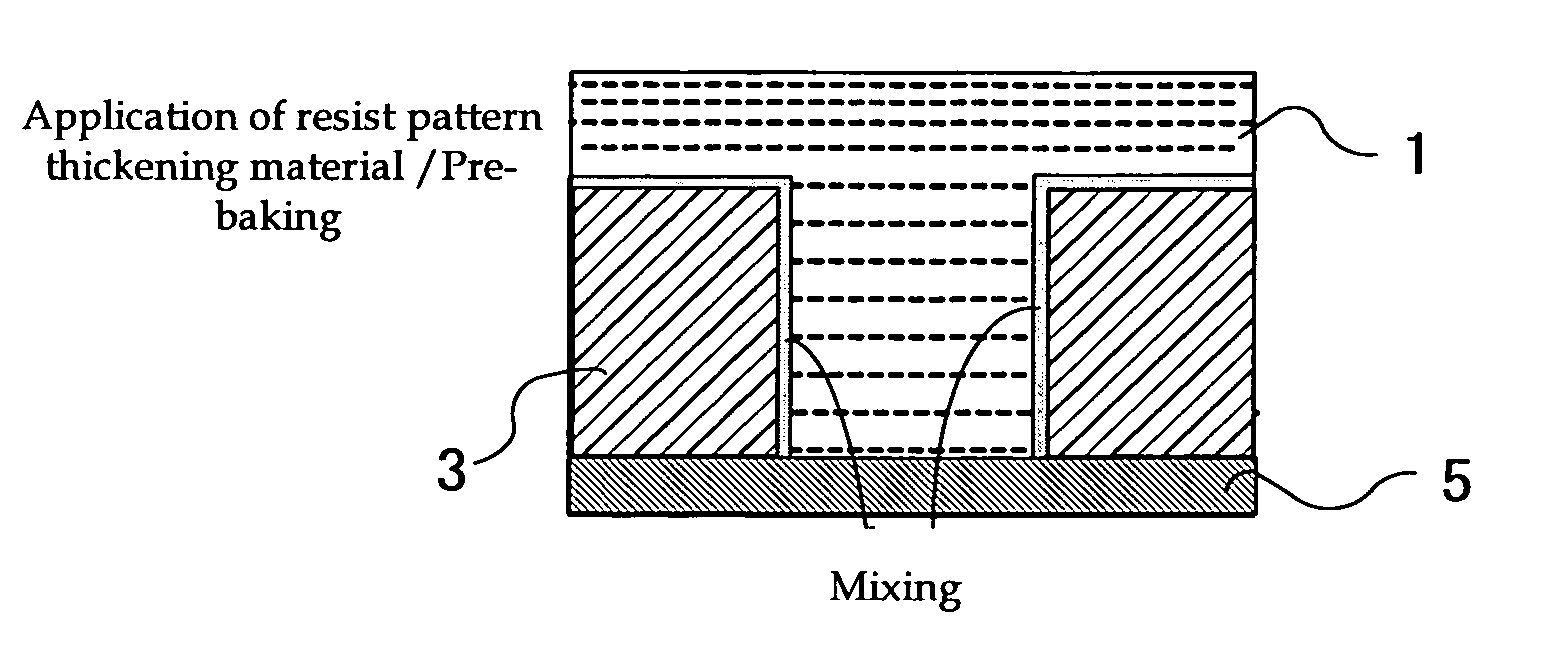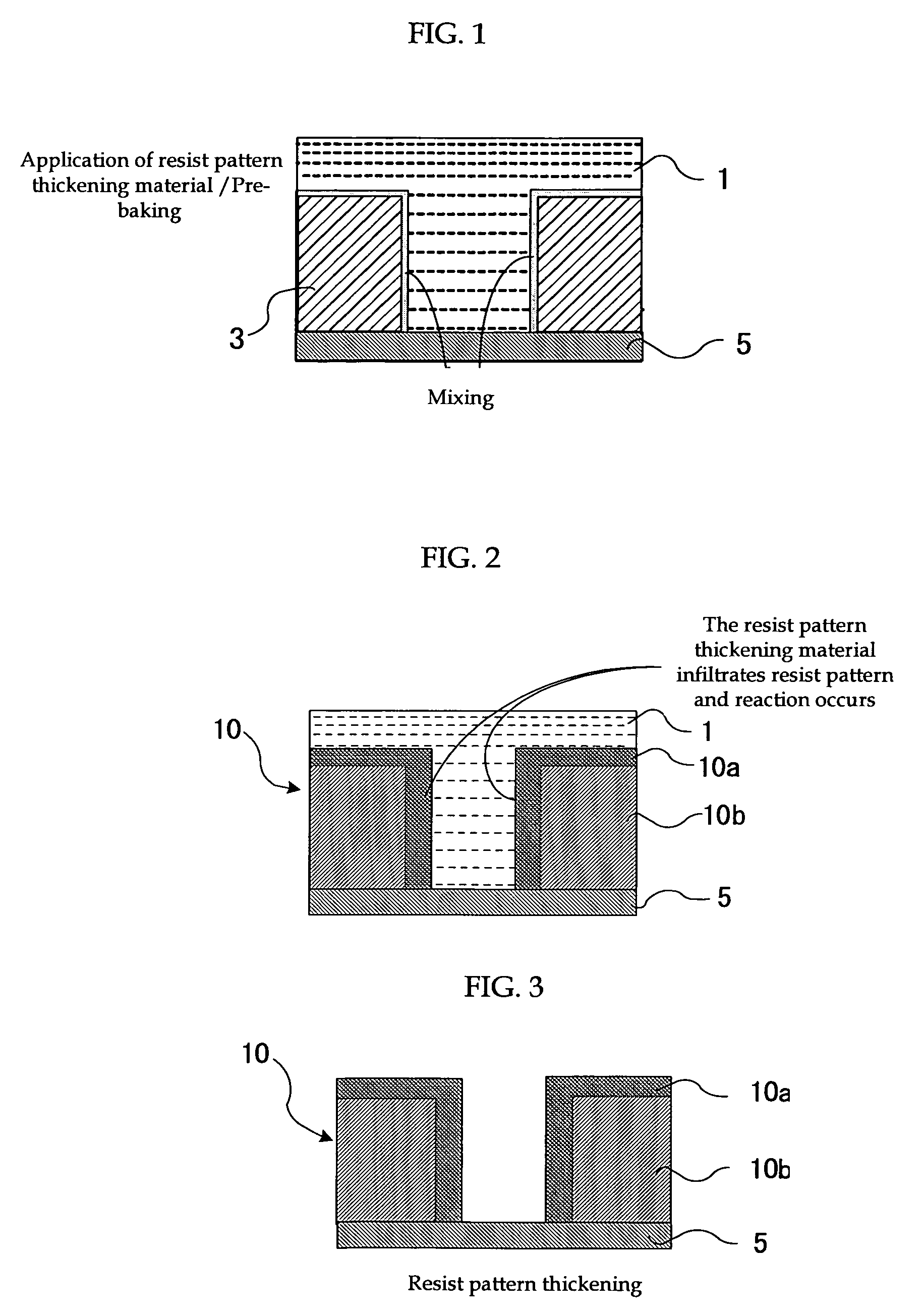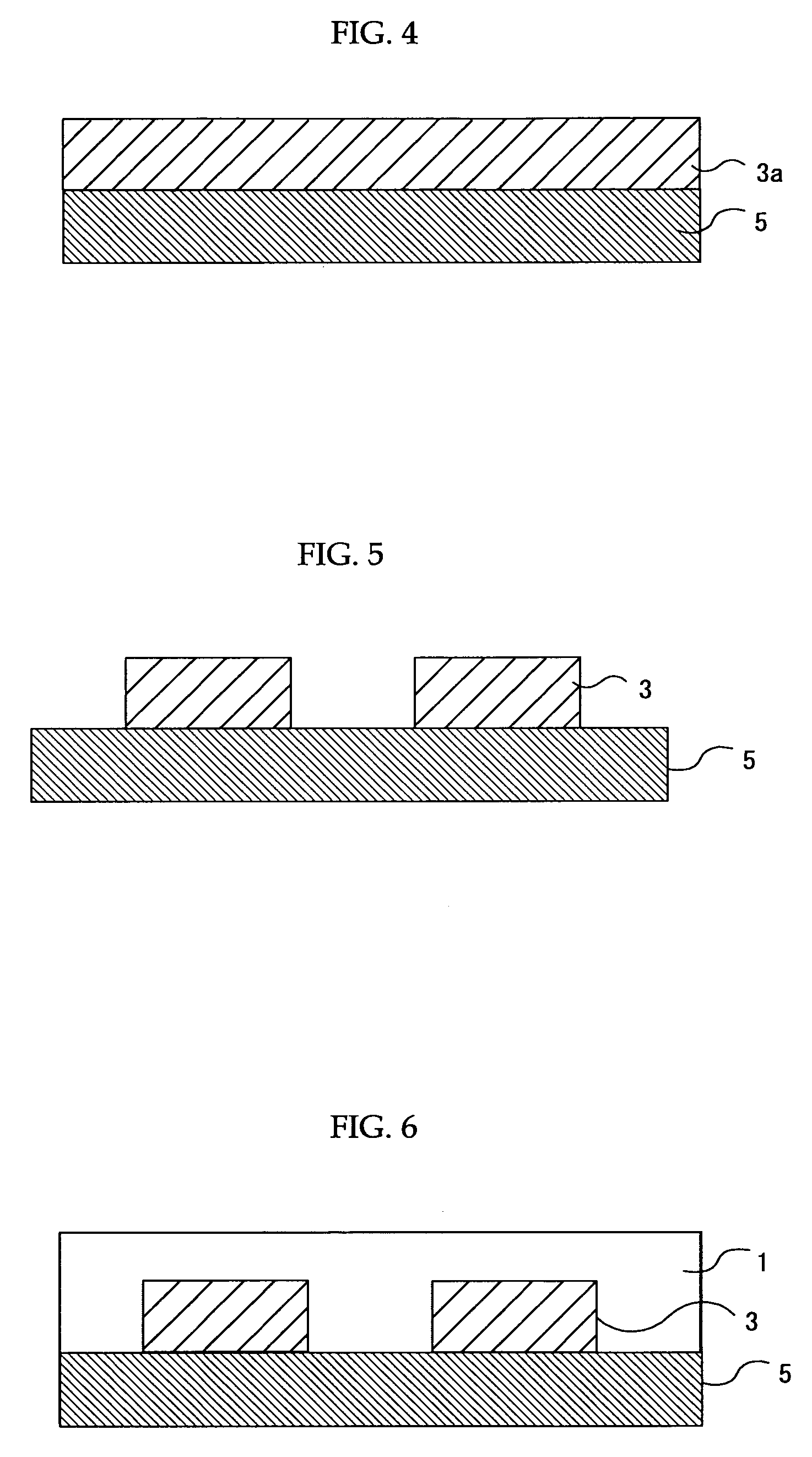Resist pattern thickening material and process for forming resist pattern, and semiconductor device and method for manufacturing the same
a technology of resist pattern and thickening material, which is applied in the direction of photosensitive materials, instruments, photomechanical equipment, etc., can solve the problems of difficult development of new resist materials suitable for exposure light of shorter wavelengths, reducing the wavelength of exposure light, and requiring a great deal of cost, etc., to achieve excellent, uniform resist pattern-thickening effect, and exceed exposure limit. , the effect of fine structur
- Summary
- Abstract
- Description
- Claims
- Application Information
AI Technical Summary
Benefits of technology
Problems solved by technology
Method used
Image
Examples
example 1
—Preparation of Resist Pattern Thickening Materials—
[0136]Resist pattern thickening materials A to O having compositions shown in Table 1 were prepared.
[0137]Note in Table 1 that the term “thickening material” means a resist pattern thickening material and that the letters “A” to “O” correspond to the resist pattern thickening materials A to O. Out of the resist pattern thickening materials A to O, the resist pattern thickening materials M to O were those prepared in Comparative Example and the resist pattern thickening materials A to L were those prepared in Examples of the present invention. In Table 1 the units in parentheses represent “parts by mass (g).”
[0138]Phenylalanine, phenyllactic acid, phenylglycine and 1-methyl-cyclohexylcarboxylic acid, which are listed in the “Compound Represented by the General Formula (1)” column for the resist pattern thickening materials A to L, are all compounds represented by the following general formula (1):
[0139]
where R represents a moiety ha...
example 2
[0155]As shown in FIG. 9, the interlayer dielectric film 12 was formed on a silicon substrate 11 and as shown in FIG. 10, a titanium film 13 was formed on the interlayer dielectric film 12 by sputtering. Next, as shown in FIG. 11, a resist pattern 14 was formed by a known photolithographic technique. Using the resist pattern 14 as a mask, the titanium film 13 was patterned by reactive ion etching to form an opening 15a. Subsequently, reactive ion etching was performed to remove the resist pattern 14 and, at the same time, as shown in FIG. 12, an opening 15b was formed in the interlayer dielectric film 12 using the titanium film 13 as a mask.
[0156]Next, the titanium film 13 was removed in a wet processing and as shown in FIG. 13, a TiN film 16 was formed on the interlayer dielectric film 12 by sputtering. By electrolytic plating, a Cu film 17 was then deposited on the TiN film 16. As shown in FIG. 14, the surface of the silicon substrate 11 was then planarized by removing the barrier...
PUM
| Property | Measurement | Unit |
|---|---|---|
| wavelength | aaaaa | aaaaa |
| wavelength | aaaaa | aaaaa |
| temperature | aaaaa | aaaaa |
Abstract
Description
Claims
Application Information
 Login to View More
Login to View More - R&D
- Intellectual Property
- Life Sciences
- Materials
- Tech Scout
- Unparalleled Data Quality
- Higher Quality Content
- 60% Fewer Hallucinations
Browse by: Latest US Patents, China's latest patents, Technical Efficacy Thesaurus, Application Domain, Technology Topic, Popular Technical Reports.
© 2025 PatSnap. All rights reserved.Legal|Privacy policy|Modern Slavery Act Transparency Statement|Sitemap|About US| Contact US: help@patsnap.com



